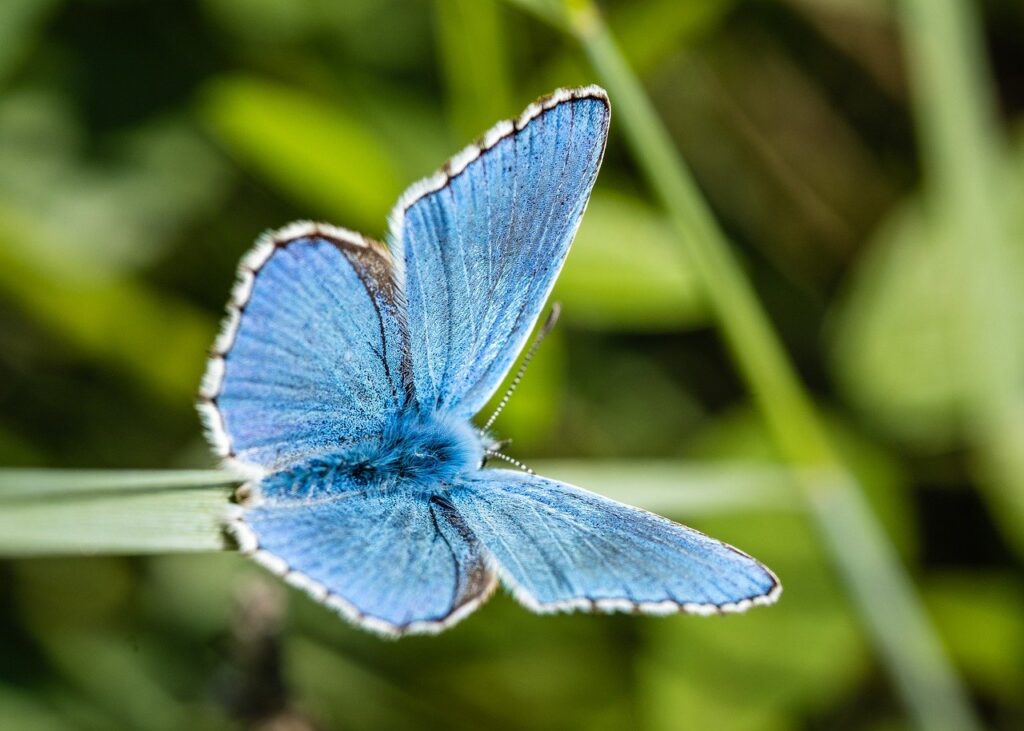In today’s world, the issue of protecting biodiversity has become more urgent than ever. As the intricate web of life on our planet continues to face threats from human activity, it is essential that we take action to preserve the rich tapestry of species that make up our natural world. This article explores various measures that can be implemented to safeguard biodiversity and ensure a sustainable future for all living creatures. From promoting conservation efforts to implementing stricter regulations, together we can make a difference and protect the diverse ecosystems that support life on Earth.

Protected Areas and Wildlife Reserves
Establishment and Management of Protected Areas
Establishing protected areas is a crucial step in conserving biodiversity. These areas, such as national parks, wildlife sanctuaries, and nature reserves, help to safeguard important habitats and provide a safe haven for vulnerable species. It is essential to carefully plan the boundaries and management strategies of these protected areas to ensure their effectiveness. This includes conducting thorough scientific research to identify priority areas, setting clear objectives for each protected area, and implementing robust management plans. Regular monitoring and evaluation are also vital to ensure that the protected areas are effectively preserving biodiversity.
Expansion and Preservation of National Parks
National parks play a vital role in safeguarding biodiversity and providing opportunities for people to connect with nature. To further protect biodiversity, it is essential to expand existing national parks and create new ones in areas that are rich in unique species and ecosystems. This expansion should be done through consultation with local communities, indigenous peoples, and government authorities to achieve a balance between conservation and sustainable development. Additionally, it is crucial to prioritize the preservation of national parks by implementing strict regulations, effective law enforcement, and adequate funding for their maintenance and protection.
Creation of Wildlife Reserves
Wildlife reserves, including wildlife sanctuaries and game reserves, are essential for the conservation of endangered and threatened species. These areas provide a managed habitat that allows animals to live and reproduce without interference from human activities. Creation of wildlife reserves should involve scientific research to identify suitable locations, consideration of the habitat requirements of target species, and collaboration with local communities. Effective management strategies, such as anti-poaching measures, habitat restoration, and community engagement programs, should be implemented to ensure the success of wildlife reserves in protecting biodiversity.
Sustainable Land and Water Management
Promoting Sustainable Agriculture Practices
Agriculture is a significant driver of biodiversity loss, but it is also a vital activity for feeding the world’s population. Promoting sustainable agriculture practices is crucial for balancing food production and biodiversity conservation. This can be achieved through the adoption of agroecology principles, such as organic farming, agroforestry, and crop rotation. Sustainable agriculture practices prioritize soil conservation, minimize pesticide and fertilizer use, and promote crop diversification. It is also important to educate farmers about these practices, provide them with technical support, and incentivize sustainable farming practices through financial schemes and subsidies.
Implementing Responsible Forestry Practices
Forests are critical for biodiversity conservation, carbon sequestration, and the livelihoods of communities. To ensure the sustainable management of forests, responsible forestry practices must be implemented. This includes adopting practices such as selective logging, reduced-impact logging, and sustainable timber harvesting. Certification schemes, like the Forest Stewardship Council (FSC), play an important role in promoting responsible forestry practices by providing standards and guidelines for sustainable timber production. It is crucial to monitor and regulate forestry operations, enforce compliance with sustainable practices, and support reforestation initiatives to restore degraded forest areas.
Regulating Water Usage and Pollution
Water is an invaluable resource for both humans and ecosystems, and its responsible management is crucial for biodiversity conservation. Regulation of water usage is necessary to prevent excessive extraction that can harm aquatic ecosystems. Implementing water management strategies, such as water quotas, efficient irrigation systems, and water recycling, can help conserve water resources. Additionally, controlling water pollution is essential to protect freshwater habitats and species. This involves strict monitoring and regulation of industrial effluents, agricultural runoff, and wastewater treatment. Collaborative efforts between government bodies, industries, and communities are essential to ensure effective water management and pollution control.
Preserving Wetlands and Coastal Areas
Wetlands and coastal areas are among the most productive and diverse ecosystems on the planet. They provide critical habitats for numerous plant and animal species, support fisheries, and provide flood mitigation. To preserve wetlands, it is essential to protect and restore their natural hydrological functions, ensure proper waste management to prevent pollution, and regulate land-use activities in their vicinity. Coastal areas must be protected through measures such as establishing marine protected areas, enforcing sustainable fishing practices, and addressing coastal development with adequate regulations and zoning plans. By preserving wetlands and coastal areas, we can safeguard important biodiversity hotspots and ensure the long-term resilience of these ecosystems.

Conservation and Restoration of Ecosystems
Conservation of Forests and Grasslands
Forests and grasslands are home to countless species and are vital for carbon storage and climate regulation. Conserving these ecosystems involves protecting them from deforestation, illegal logging, and land conversion. Measures such as land acquisition and the establishment of protected areas can help preserve intact forests and grasslands. Collaborating with local communities, indigenous peoples, and NGOs is crucial for promoting sustainable land-use practices, engaging in reforestation efforts, and reducing habitat fragmentation. Conservation initiatives should also focus on preserving key wildlife corridors that facilitate the movement of species between fragmented habitats.
Reforestation and Afforestation Initiatives
Reforestation and afforestation initiatives are crucial for restoring degraded landscapes and enhancing biodiversity. Reforestation involves replanting trees in areas where forests have been cleared, while afforestation involves establishing new forests in previously treeless areas. These initiatives can help recreate habitats, promote carbon sequestration, and provide livelihood opportunities for local communities. Reforestation and afforestation should prioritize the use of native tree species, ensure ecological compatibility with surrounding ecosystems, and involve ongoing monitoring and maintenance to ensure the success of these restoration efforts.
Protection of Marine and Freshwater Ecosystems
Marine and freshwater ecosystems are under increasing pressure due to overfishing, pollution, and habitat destruction. Protecting these ecosystems requires the establishment and effective management of marine protected areas (MPAs) and freshwater reserves. MPAs help to preserve important habitats, foster the recovery of depleted fish stocks, and protect vulnerable species. Preservation of freshwater ecosystems involves regulating water abstraction, controlling pollution, and addressing the impacts of dams and other infrastructure. Collaborative efforts between governments, scientists, and local communities are essential to protect and restore these vital aquatic ecosystems.
Restoration of Degraded Habitats
Human activities have led to the degradation of many ecosystems worldwide, posing a significant threat to biodiversity. Restoration of these degraded habitats is crucial for increasing resilience, providing ecosystem services, and supporting species recovery. Restoration projects involve activities such as habitat rehabilitation, re-vegetation, and soil erosion control. It is essential to involve local communities and indigenous peoples in these efforts, as their knowledge and traditional practices can contribute to the success of restoration initiatives. Robust monitoring and evaluation should also be carried out to measure the effectiveness of restoration activities and adapt management strategies accordingly.
Endangered Species Protection
Implementing International Agreements and Conventions
International agreements and conventions play a crucial role in protecting endangered species by promoting cooperation and setting global conservation standards. Treaties such as the Convention on International Trade in Endangered Species of Wild Fauna and Flora (CITES) regulate the international trade of endangered species and ensure their sustainable use. It is essential for countries to enforce these agreements and collaborate in sharing knowledge, resources, and expertise to combat wildlife trafficking, habitat destruction, and illegal trade. By working together, we can enhance the protection of endangered species and promote their recovery.
Enforcing Strict Laws and Regulations Against Wildlife Trafficking
Illegal wildlife trade remains a significant threat to biodiversity, decimating populations of endangered species and fueling organized crime. To combat wildlife trafficking, strict laws and regulations must be in place and effectively enforced. This includes increasing penalties for wildlife crimes, establishing specialized units dedicated to combating wildlife trafficking, and strengthening border controls. Collaborative efforts between law enforcement agencies, conservation organizations, and local communities are essential for detecting and intercepting illegal wildlife trade networks. By targeting the root causes of wildlife trafficking and disrupting the supply chains, we can protect endangered species and their habitats.
Creating Breeding and Reintroduction Programs
Breeding and reintroduction programs are vital for conserving endangered species and restoring their populations. These programs involve captive breeding of endangered species, scientific research on breeding biology and genetics, and planning for reintroduction into the wild. Successful breeding programs require expertise, adequate facilities, and collaboration between zoos, conservation organizations, and scientific institutions. Reintroduction efforts should consider the suitability of release sites, monitor the success of released individuals, and involve ongoing post-release monitoring and management. By investing in these programs, we can increase the chances of survival for endangered species and aid their long-term recovery.
Supporting Captive Breeding and Conservation Centers
Captive breeding and conservation centers play a crucial role in conserving endangered species by maintaining breeding populations and conducting research. These facilities provide a safe haven for endangered species, allowing for reproductive success, genetic diversity preservation, and public education. Proper management and welfare of captive animals are essential, including adherence to ethical guidelines, minimizing stress, and ensuring adequate living conditions. Collaborations between captive breeding centers, research institutions, and field conservation organizations enable the effective exchange of knowledge and expertise. By supporting these facilities, we can safeguard endangered species and contribute to their conservation.

Promoting Sustainable Fishing Practices
Implementing Fishing Quotas and Limits
Overfishing is a significant threat to marine biodiversity, depleting fish stocks and disrupting marine ecosystems. Implementing fishing quotas and limits is crucial for the sustainable management of fisheries. These measures involve setting catch limits for specific fish species, regulating fishing seasons and gear types, and implementing protected areas where fishing is prohibited. Effective fisheries management requires a science-based approach, regular monitoring of fish populations, and involving stakeholders in decision-making processes. By ensuring sustainable fishing practices, we can maintain the health and productivity of marine ecosystems and protect both target and non-target species.
Promoting Responsible Fishing Techniques
Alongside fishing quotas, promoting responsible fishing techniques is essential for minimizing the environmental impact of fishing activities. This includes the use of selective fishing gear that reduces bycatch, minimizing ghost fishing from lost or discarded gear, and avoiding destructive fishing practices that damage habitats such as bottom trawling. Implementing these techniques requires raising awareness among fishermen, providing training on sustainable fishing practices, and incentivizing the adoption of environmentally friendly technologies. By encouraging responsible fishing, we can protect marine biodiversity and ensure the long-term sustainability of fish stocks.
Protecting Marine Environments from Destructive Fishing Practices
Destructive fishing practices, such as bottom trawling and dynamite fishing, have devastating impacts on marine ecosystems. It is essential to protect sensitive habitats, such as coral reefs and seagrass beds, from these destructive practices. This can be achieved through the establishment of marine protected areas, implementing legal frameworks that regulate destructive fishing methods, and increasing surveillance and law enforcement efforts. Collaboration between governments, conservation organizations, and local communities is crucial for effectively protecting marine environments and ensuring the recovery of biodiversity.
Addressing Climate Change and Pollution
Reducing Greenhouse Gas Emissions
Climate change poses a grave threat to biodiversity, affecting species’ distribution, altering ecosystems, and increasing the incidence of extinction. To mitigate these effects, it is necessary to reduce greenhouse gas emissions. This involves transitioning to low-carbon energy sources, promoting energy efficiency, and adopting sustainable transportation systems. Governments, businesses, and individuals all have a role to play in reducing emissions through policy changes, technological advancements, and behavioral shifts. By prioritizing emission reductions, we can limit the impacts of climate change on biodiversity and create a more sustainable future.
Mitigating Pollution from Industries
Industrial pollution, including air and water pollution, adversely affects biodiversity and ecosystem health. To mitigate the pollution caused by industries, it is essential to implement stringent regulations, promote cleaner production techniques, and encourage the adoption of pollution control technologies. Industries should be held accountable for their environmental impacts through better monitoring systems, increased transparency, and penalties for non-compliance. Collaboration between industries, regulatory bodies, and environmental organizations is crucial for identifying pollution sources, implementing pollution prevention measures, and fostering a culture of environmental stewardship.
Promoting Renewable Energy Sources
The transition from fossil fuels to renewable energy sources is critical for combating climate change and reducing pollution. Renewable energy, such as solar, wind, and hydropower, offers a sustainable alternative to fossil fuels, reducing greenhouse gas emissions and the environmental impact associated with energy production. Governments can play a significant role by providing incentives for renewable energy development, investing in research and development, and establishing supportive policies and regulations. By promoting renewable energy sources, we can reduce our dependence on fossil fuels, mitigate climate change, and protect biodiversity from the associated impacts.
Education and Awareness
Promoting Environmental Education in Schools and Communities
Education is a key tool for cultivating a sense of environmental responsibility and promoting biodiversity conservation. Environmental education should be integrated into school curricula, fostering an understanding of the value of biodiversity, the impacts of human actions, and the importance of sustainable practices. Additionally, community-based environmental education programs can raise awareness among individuals of all ages, empowering them to take action and make informed choices in their daily lives. By prioritizing environmental education, we can instill a sense of stewardship and cultivate a society that values and protects biodiversity.
Raising Public Awareness about Biodiversity Conservation
Public awareness is crucial for garnering support and fostering a culture of biodiversity conservation. Communication campaigns, media engagement, and public events can help raise awareness about the importance of biodiversity and the threat of its loss. These efforts should highlight success stories, showcase the intrinsic values of nature, and emphasize the benefits of biodiversity for human well-being. Governments, NGOs, and media outlets should collaborate to deliver scientifically accurate and accessible information that encourages people to adopt behavior changes and support conservation initiatives.
Encouraging Citizen Science Initiatives
Citizen science plays a vital role in biodiversity monitoring, data collection, and raising awareness among the general public. By involving ordinary citizens in scientific research and data collection efforts, citizen science initiatives engage individuals in meaningful conservation activities. These initiatives can include citizen-led bird counts, wildlife monitoring programs, and biodiversity mapping projects. Providing accessible tools, training, and platforms for data sharing are essential for the success of citizen science initiatives. By empowering citizens to contribute to biodiversity conservation, we can harness the power of collective action and make a meaningful difference.
Engaging Local Communities and Indigenous Peoples
Involving Local Communities in Conservation Efforts
Engaging local communities in conservation efforts is crucial for the long-term sustainability of biodiversity conservation initiatives. The involvement of local communities ensures the inclusion of traditional knowledge, enhances the effectiveness of conservation strategies, and fosters a sense of ownership and stewardship. It is essential to consult and collaborate with local communities in decision-making processes, involve them in protected area management, and create economic opportunities through sustainable livelihood projects. By empowering and involving local communities, we can build strong partnerships and achieve successful biodiversity conservation outcomes.
Supporting Sustainable Livelihoods for Indigenous Peoples
Indigenous peoples have a strong connection to nature and play an essential role in biodiversity conservation. Supporting sustainable livelihoods for indigenous communities is crucial for maintaining their traditional practices, land stewardship, and cultural heritage. This can be achieved by valuing and respecting indigenous knowledge, providing access to basic services such as education and healthcare, and supporting sustainable income-generating activities that align with their traditional practices. Collaboration with indigenous peoples in decision-making processes and acknowledging their rights to land and resources are essential for achieving equitable and sustainable biodiversity conservation.
Respecting Traditional Knowledge and Practices
Traditional knowledge and practices of local communities and indigenous peoples hold invaluable insights into biodiversity conservation. Their understanding of ecosystems, wildlife behavior, and sustainable resource management has been accumulated over generations. It is essential to respect and incorporate traditional knowledge into conservation practices, research, and policy-making. This involves establishing mechanisms for the effective sharing and integration of traditional knowledge into decision-making processes and scientific endeavors. By recognizing and respecting traditional knowledge, we can foster a holistic approach to biodiversity conservation that combines scientific and traditional wisdom.
International Cooperation and Funding
Collaborating with Other Nations in Biodiversity Conservation
Biodiversity conservation is a global challenge that requires international cooperation and collaboration. Countries must work together to share knowledge, resources, and best practices to address transboundary conservation issues effectively. Establishing collaborative frameworks, such as international agreements, joint research initiatives, and exchange programs, can help facilitate cooperation between nations. This collaboration should focus on conserving migratory species, managing shared ecosystems, and promoting sustainable development practices. By forging strong partnerships, we can enhance the collective effort towards protecting biodiversity and achieving global sustainability goals.
Providing Financial Support for Conservation Projects
Financial support is vital for implementing effective biodiversity conservation projects. Governments, international organizations, and philanthropic entities must allocate adequate funds to support the establishment of protected areas, scientific research, community engagement, and capacity building. Funding should prioritize projects based on their conservation impact, scientific merit, and alignment with local needs. Additionally, innovative financing mechanisms, such as payments for ecosystem services and biodiversity offsets, can provide sustainable funding sources for conservation efforts. By investing in biodiversity conservation, we can ensure the long-term protection of ecosystems and species.
Establishing International Funds and Grants
International funds and grants play a crucial role in supporting biodiversity conservation initiatives. Organizations such as the Global Environment Facility (GEF) and the Green Climate Fund (GCF) provide financial resources to countries and organizations for implementing conservation projects, promoting sustainable development, and addressing climate change. It is essential to establish transparent and accountable mechanisms for allocating and distributing funds to ensure their efficient and effective use. Collaboration between international funding agencies, governments, and NGOs is crucial for identifying priority areas and ensuring the equitable distribution of financial support.
Regulating Invasive Species
Implementing Policies to Control or Eradicate Invasive Species
Invasive species pose a significant threat to native biodiversity, often outcompeting native species and disrupting ecosystem functioning. To mitigate the impacts of invasive species, it is essential to implement policies and regulations that control or eradicate their spread. This includes strict biosecurity measures, restrictions on the trade of invasive species, and targeted eradication programs for established populations. Surveillance and early detection systems are crucial for timely interventions and preventing the establishment of new invasive species. Collaboration between governments, research institutions, and NGOs is necessary to develop comprehensive strategies and share best practices in invasive species management.
Preventing Introduction of New Invasive Species
Preventing the introduction of new invasive species is crucial for protecting biodiversity and ecosystem integrity. This requires implementing robust measures to prevent the unintentional introduction of invasive species through trade, transportation, and travel. Strengthening biosecurity measures at ports, airports, and border checkpoints can help intercept potential invasive species. International collaborations, such as developing international standards and sharing information on high-risk species, can also contribute to preventing new introductions. By prioritizing prevention and early action, we can minimize the impacts of invasive species and protect native biodiversity.
Restoring Ecosystems Affected by Invasive Species
Ecosystem restoration is essential for recovering habitats affected by invasive species. Restoring ecosystems involves removing or controlling invasive species, restoring native plant communities, and enhancing ecological processes. This can be achieved through targeted eradication efforts, followed by active restoration techniques such as re-vegetation and habitat rehabilitation. Collaboration between restoration practitioners, scientists, and local communities is vital for developing effective restoration strategies, monitoring ecological recovery, and adapting management practices as needed. By restoring ecosystems affected by invasive species, we can revive biodiversity and enhance the resilience of natural habitats.




